CAPABILITIES
CNC Turning/Lathe Service
Our CNC turning/lathe centers deliver:
- Tolerances down to ±0.0004″ (0.01mm).
- Parts are ready in as little as 1 day.
- Access to over 50 types, including metals and polymers.
- Advanced lathe and live tooling for high-quality turned parts.






All uploads are secure and confidential.
Our CNC Turning Service

Prolean Tech offers CNC turning services using advanced CNC lathes with live tooling, which is ideal for creating axial and radial holes, flats, grooves, and slots. Here’s what we provide:
- Rapid Turnaround: CNC turning service with a 1-day lead time for prototypes and production parts.
- Precision Capabilities: Perfect for functional prototypes, final-use parts, and components requiring precise cylindrical or symmetrical features.
- Material Versatility: On-demand manufacturing of metal or plastic parts, suitable for both prototyping and full-scale production runs.
- Certifications: Upon request, we provide certificates of conformity, raw material certifications, and detailed measurement reports to meet client specifications.


Try Prolean Now!
Our CNC Lathe Capabilities
How does CNC Turning Work?
Here’s a brief overview of how turning operations work.
Step 01: Converting CAD Design to CNC Program:
Our engineers initially design a part using CAD tools like AutoCAD or SolidWorks and then precisely transfer the design to a CNC program for cutting.
Step 02: CNC Turning Machine Setup:
Our lathe machining experts ensure precise workpiece positioning & tool selection, ensuring accuracy when uploading the CNC program.
Step 03: Optimizing Speed and Feed Rate:
Our skilled operators adjust the turning speed and feed rate after determining that the current speed is adequate to provide the desired surface finish and tolerance.
Step 04: Precision Manufacturing:
CNC turning requires careful attention to detail and control of each stage, from loading to cutting, to produce parts with complex shapes.
How to Order Parts?
Get a free quote from a real engineer; once we receive your design, our engineer will review it and send you a quote as fast as one hour.

Get A Quote Immediately
Upload your design or email our engineer directly and get your quotes as fast as one hour.

Start Production
Your parts will be made once your orders are confirmed. Besides, you will get real-time order updates of the production status from our order tracking system.

Receive Your Part
After all parts pass QC inspection, they will be well packed from transportation accidents. Then, your custom parts are delivered straight to your doorstep.
CNC Turning Materials
 Brass CNC Turning
Brass CNC Turning
Brass manufactures durable CNC turning products, including plumbing fixtures and electrical contacts. Ms58 (CuZn39Pb3) is preferred due to its easy-to-machine properties and high resistance to corrosion.
 Aluminum
Aluminum
Aluminum is ideal for CNC to create lightweight products such as aircraft supports and car parts. Aluminum alloys include 2007 (Al-CuMgPb), used in high-strength parts, and 6061 (Al-Mg1SiCu), used in structures.
 Low Carbon Steel
Low Carbon Steel
Low-carbon steel can be used in general-purpose parts, including auto brackets and machine parts.
1.S235JR steel, with no. 0038, is chosen for welding and has relatively moderate strength.
 Steel Alloy
Steel Alloy
Steel alloys, such as gears and shafts, are used in applications requiring strength. 1.7225 (42CrMo4) has high hardenability, toughness, and wear resistance for specific applications.
 Stainless Steel
Stainless Steel
Titanium is used when a high strength-to-weight ratio is required, such as in aircraft manufacture and the medical field. Grade 2 (3.7035) and Grade 5 (Ti-6Al-4V) are strong and corrosion-resistant.
 Plastics
Plastics
The custom housings and device prototypes use ABS and polycarbonate (PC). PEEK’s high performance is in application areas that require high strength and toughness.
CNC Lathe Part Finishing Options

As-Milled
The quickest of all the surface finishes leaving parts with visible tool marks, sharp edges, and burrs. The surface roughness is as smooth as 125 µin Ra. Some of the burrs and sharp edges can be deburred on request.

Bead Blast
Abrasive blasting, or sandblasting, involves firing abrasive material fast to smooth, roughen, shape surfaces, or remove impurities.
- Grit: #120
- Color: A matte finish of raw material color is uniform.
- Part Masking: Include the use of masks in technical drawings

Anodized (Type II Or Type III)
Type II anodizing safeguards surfaces from corrosion and is available in clear, black, red, or gold, primarily for aluminum. Type III adds extra wear & corrosion resistance. Grit #120 ensures a smooth, uniform color. Technical drawings should include part masking details.

Powder coating
Powder coating applies durable paint baked on for wear and corrosion resistance. It is available in black or any RAL/Pantone color. Thickness: 18-72µm. Part masking details are required in technical drawings.

Polishing
Polishing can be applied through electrochemical and mechanical methods. It produces a smooth and fine, mirror-like finish with Ra as low as 0.3 μm. This surface finish is preferred for machined parts if low-surface friction is essential for performance or aesthetics is important.

Black-Oxide
Black oxide treats ferrous materials, creating a sleek black, mildly corrosion-resistant oxide layer. It is ideal for precision components needing a low-reflective, durable surface and preserves tight tolerances.
Try Prolean Now!
Advantages of CNC Turning
- High Precision Tolerances
Prolean Tech offers excellent accuracy, with tolerance levels of ±0.005″, depending on requirements. We pride ourselves on producing complex components with exacting standards.
- Scalability
We offer capabilities for small sample orders and large orders of up to 100,000 parts and handle the easy transition from testing prototyping to mass production.
- Custom Surface Finishes
Upgrade your components with Prolean Tech’s selection of bespoke surface coatings. We offer different finishing services that can be applied to various materials to meet your parts’ aesthetic and functional needs.
Comparing CNC Turning With Other Machining Techniques
| Factors | CNC Turning | Conventional Turning | Swiss CNC Turning |
| Technical Specifications | Max Diameter: 12″, Min Diameter: 0.125″, Precision: ±0.001″ | Max Diameter: 10″, Min Diameter: 0.25″, Precision: ±0.010″ – 0.020″ | Max Diameter: 1.25″, Min Diameter: 0.02″, Precision: ±0.0005″ |
| Scope of Applications | Parts: Shafts, Connectors, Hydraulic Components; Industries: Automotive, Aerospace, General Engineering | Parts: Custom Cylindrical Parts, Prototypes; Industries: Woodworking, Small-Batch, Manufacturing, Education | Parts: Medical Implants, Micro-Valves, Aerospace Components; Industries: Medical, Electronics, Aerospace |
| Automation | High (easily integrated into automated systems) | Low (manual operation, limited automation) | Low (manual operation, limited automation) |
| Cost | Initial Cost: $50,000 – $150,000; Operating Cost: Moderate | Initial Cost: $10,000 – $30,000; Operating Cost: Low | Initial Cost: $100,000 – $300,000; Operating Cost: High |
CNC Turning Applications

Automotive
CNC Turing specializes in accurately producing engine parts and suspension and transmission shafts for car and off-road vehicles.

Electrical Industry
Specializes in manufacturing copper and brass screws and bolts for applications in assembling and joining electrical equipment.

Aerospace
CNC Turning produces high-demand fasteners, probes, and connectors, such as titanium, for aircraft engines and structures.

Medical
It primarily manufactures surgical tools, medical devices, and diagnostic tools for the healthcare sector, emphasizing accuracy and compatibility.

Energy
In energy sectors, CNC Turning is employed to manufacture power turbine blades, valve bodies, and connectors for high-pressure and sever service in power generation and the oil & gas industry.
Try Prolean Now!
CNC Turning Parts Gallary
Technology Overview
What is CNC Turning?
CNC turning is a fully computer-controlled manufacturing process in which a round workpiece spins and a tool is fed into it. During turning, material from the workpiece’s outer surface is removed by feeding it into the tool to create the desired shape. The computer program ultimately dictates the removal process.
The CNC turning process can work in both axes of rotation (horizontal and vertical). Turning can machine a wide range of material bars, from Nylon to Titanium, brass, and steel, with the help of drilling, boring, reaming, grooving, threading, knurling, and taper turning according to CAD and input instructions.
If you want to produce axial symmetry profiles, like cones, cylinders, disks, or a combination of those shapes, CNC turning is definitely for you.
Working Principle of CNC Turning
The working principle of CNC turning is executing computer code on a CAD file to remove material from the outer surface of the work bar to achieve the desired shape. The CNC turning process is finished in four major steps: creating a digital representation (CAD), generating machining code from CAD files, CNC lathe setup, and manufacturing turned parts from computer input instructions.
The raw material bar is first attached to the chuck, which begins to rotate following the input speed. Following this, the cutting tool is started to feed the material to produce the desired shape. The turning tools are available in various speeds and sizes to create a particular shape from the workpiece. Even though the CNC turning process is numerically controlled, manual supervision is still required to guarantee precise shape and tight tolerance.
CNC turning can work with cylinder-shaped, square-shaped, or hexagonal-shaped objects. However, the most typical shape is the cylindrical one.
Different types of CNC Turning
While there are many different CNC turning processes, some of the most common ones include taper turning, step turning, contour turning, grooving, parting, threading, and more. The primary distinction between these turning processes is how the material is fed into the various turning tools.
Taper turning is gradually reducing or increasing the diameter of a cylindrical workpiece to produce a conical surface. In contrast, a step-up turning involves a sudden increase or decrease of the diameter. The cutting tool axially follows a trajectory with a predefined geometry when performing a contour turning operation.
A narrow cut called a “groove” is made around the workpiece’s cylindrical surface within the specific segment during the grooving. The parting process looks like grooving, but the cutting tool reaches the part’s axis and cuts off a section.
In the turning process known as threading, a tool is moved along the side of a cylindrical workpiece to create continuous helical grooves. The boring is related to internal turning, increasing the hole diameter’s accuracy, where a pre-formed hole is enlarged through this process.
See How Customers Dig Us
We were working on some stainless steel turning projects and contacted Polean to outsource a couple of parts. We sent our design and they made the parts. Those were exactly to needed specifications. Our factory will come back for other projects.
-Paul Campbell, TechFab Innovations
The ordered milling gears were as per our drawing. The surface treatment also looks nice. Once we get feedback from our vendors, I will contact you for subsequent batches. We might need to modify the teeth size and other parameters.
-Jennifer Baker, Senior R&D Engineer
ProleanTech's Mill Turn services have consistently delivered exceptional results for our custom heat sinks. We appreciate their professionalism and commitment to timely delivery.
-Jason Adams, Director of Operations at CastMaster Technologies
Their services of machining justify the name “ProLean” . Engineers and operators are pro at technology and seems like they have mastered the lean manufacturing principles.
-Hannah Murphy, Head of Tooling Engineering at PrecisionMold Works
Thank you. The engineers really go the extra step to set up the custom tooling for our Mechanical coupling components. We will also order some other CNC-turned parts for our new project.
-Richard Green, MachiningPro Labs
Proleantech CNC turning services exceeded my expectations. They send me to inspect my small steel parts before the full-scale run. The precision and exact specifications of the final pieces were flawless. I'll recommend and return.
-Victoria Harris, Product Development Engineer
CNC Turning FAQ’s
General FAQ’s
What is CNC Turning?
CNC turning follows the axial turning principle, quickly removing material from job material using cutting tools mounted on the machine. This method reduces errors and offers flexibility in the part’s design, increasing efficiency.
What are the different types of Turning?
Here are common types of turning;
- Straight Turning
- Taper Turning
- Contour Turning
- Threading
- Boring
- Knurling
- Grooving
What materials can be used in CNC turning?
CNC turning can process various materials, including metals (such as aluminum, steel, and titanium), engineered plastics like ABS, Delrin, etc, and wood.
What are the drawbacks of CNC turning in prototyping?
CNC turning may not be as effective as other techniques in the rapid prototyping process due to setup and programming time. Moreover, It’s not economical for small production lots or prototyping.
What are the benefits of applying CNC turning tools?
CNC turning is precise, accurate, repeatable, and fast. It produces complex parts by eliminating human interference. It requires little time to set up and is versatile in handling different materials.
Technical FAQ’s
How do vertical and horizontal CNC lathes differ?
What Shapes Can CNC Turning Produce?
Differences Between CNC Turning and CNC Milling.
CNC turns the material, and the tool is static, creating long chips. CNC milling cuts the material while the tool is in motion and the material is stationary, thus producing short chips with multiple blades.
What do you mean by CNC Turning Center?
What characteristics should be considered in CNC turning for length-to-diameter ratio, corner radius, and tolerance?
Get Your Parts Made Today
All uploads are secure and confidential.

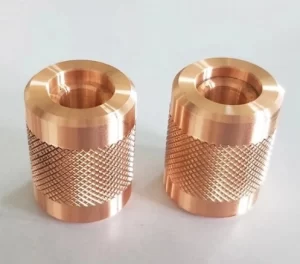 Brass CNC Turning
Brass CNC Turning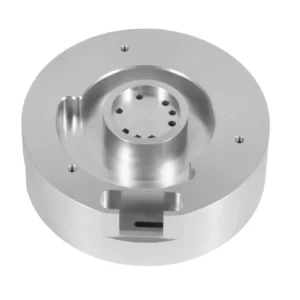
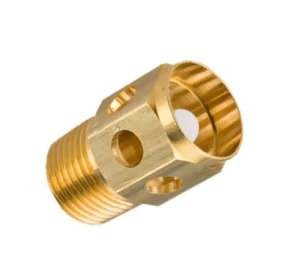 Low Carbon Steel
Low Carbon Steel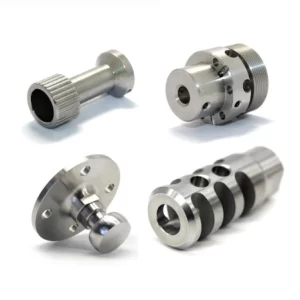 Steel Alloy
Steel Alloy 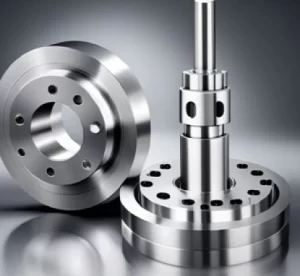 Stainless Steel
Stainless Steel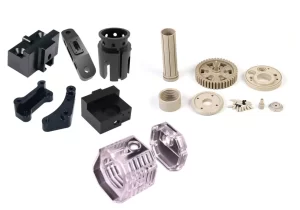 Plastics
Plastics